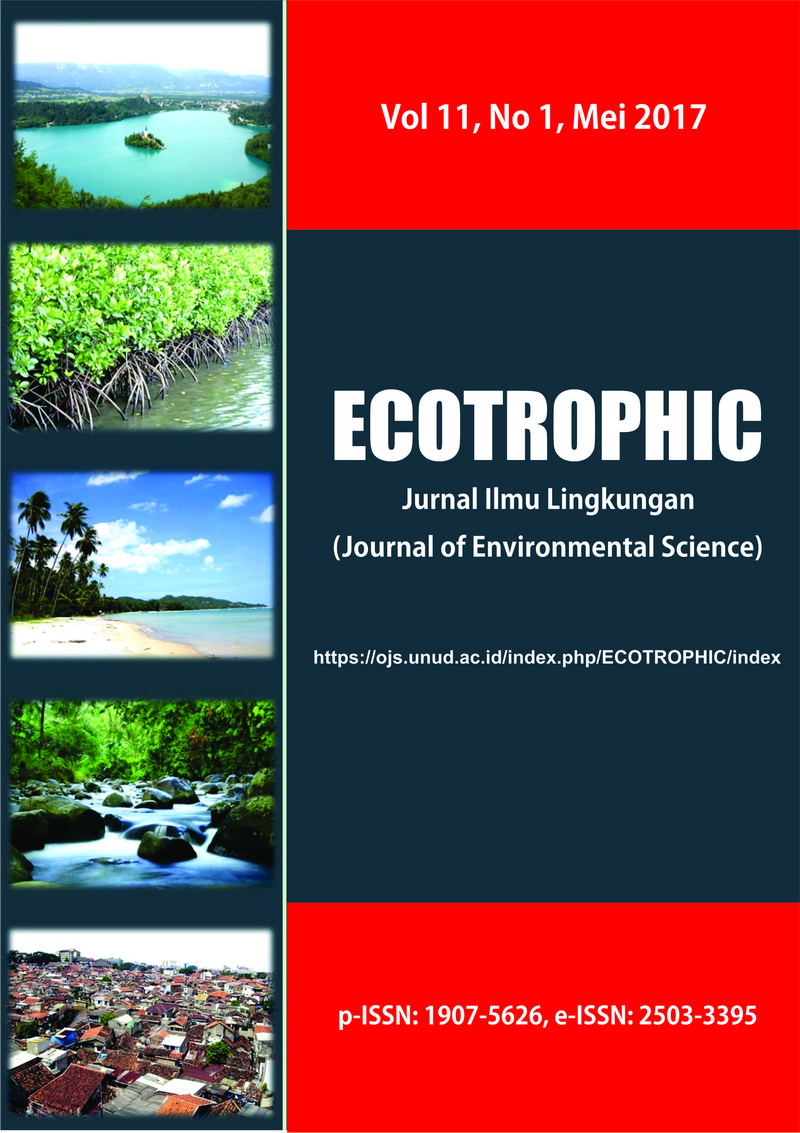BIODEGRADASI REMAZOL BRILIANT BLUE DALAM SISTEM BIOFILTRASI VERTIKAL DENGAN INOKULUM BAKTERI DARI SEDIMEN SUNGAI MATI IMAM BONJOL DENPASAR
Abstract
BIODEGRADATION REMAZOL BRILLIANT BLUE IN VERTICAL FILTRATION SYSTEM WITH INOKULUM BACTERIA FROM DIED SEDIMEN RIVER IMAM BONJOL DENPASAR
The biodegradation research of Remazol Brilliant Blue (RBB) has been done in vertical biofiltration systems with bacterial inoculum that had seed from soil Mati River Imam Bonjol Denpasar. This aims of research are to obtain the best active suspension grown from soil samples of Mati river sediment and to determine the magnitude of the effectiveness and capacity of biosystem . The artificial waste water of RBB has made with a concentration of 200 mg/L. In the first phase, the best active suspension is obtained by determining the value of VSS ( Volatile Suspended Solid ) is the highest as a source of inoculum of bacteria capable of degrading RBB. While the second phase, the effectiveness and capacity of biosystem is obtained by determining the levels of waste of artificial RBB vertical biofiltration system (biosystem). Biofilm has made with attached bacteria consortium in volcanic rock for 7 days. RBB subsequently incoporated into it to determine the concentration of it and to determine the effectiveness and capacity and identified the bacteria contained in biosystem. The results showed the best sludge active from soil sediments of the Mati River Imam Bonjol Gang Keladian with a value of Volatile Suspended Solid (VSS) highest of 17200 mg/L when the sreeding time of 48 hours. The results of processing using biosystem known to decreased when the processing time from 6 hours up to 114 hours, from concentration of 200 mg/L to 19.6211 mg/L. Then the prosses has increased again into 19.8209 mg/L at the time to 120 hours. The highest effectivity of biosystem to degrading remazol brilliant blue of 90.19 % for 114 hours , while the highest capacity is obtained from the biosystem is 1.6525 x mg /g for 114 hours. The bacteria that act to decreased identified as Pseudomonas sp., Aeromonas sp . and Plesiomonas sp, with Pseudomonas sp more dominant in the degrading of dye RBB. The value of the colonists before degradation of 7.2 x CFU/gr and the value after the degradation of 2.6 x CFU/gr.


